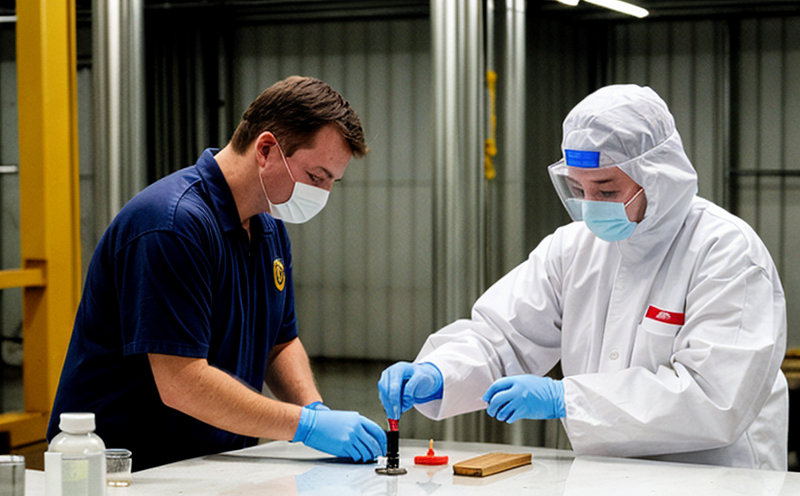Temperature & Environmental Resistance Testing
The demand for robust packaging solutions in various industries has led to a growing need for thorough testing that ensures products can withstand harsh environmental conditions. Temperature and environmental resistance testing is crucial for ensuring the integrity of packaging materials under extreme temperatures, humidity, and other stressors.
At our laboratory, we offer comprehensive temperature and environmental resistance tests tailored to meet the specific needs of different sectors such as pharmaceuticals, electronics, food & beverage, and consumer goods. These tests are essential in guaranteeing that your products will perform reliably under real-world conditions before reaching consumers or being shipped internationally.
Our testing process begins with careful selection of appropriate specimens based on industry standards like ISO 17852-3:2016 for plastic films and sheets, ASTM D1692 for paperboard, corrugated board, and containers, among others. Once the samples are prepared according to these guidelines, they undergo rigorous environmental stress exposure in our climate chambers.
The temperature range can vary from -40°C up to 150°C depending on product requirements, while humidity levels typically span between 20% RH and 98% RH. This wide range allows us to simulate conditions found both during manufacturing processes and throughout distribution channels worldwide.
After exposure, our experts carefully inspect the samples for any signs of degradation or failure. Acceptance criteria are based on visual inspection as well as more quantitative measurements such as weight loss, thickness changes, color shift, etc., depending upon the material being tested.
In addition to standard tests, we also offer custom environmental simulation protocols designed specifically around your unique product specifications and market requirements. This ensures that you receive accurate results relevant directly to your business needs.
Our commitment to excellence extends beyond just performing these tests; it includes providing detailed reports summarizing each phase of the testing process along with actionable insights regarding improvements needed for future iterations or new designs.
Why It Matters
Effective temperature and environmental resistance testing plays a critical role in ensuring product quality, safety, and compliance across various industries. For instance, pharmaceutical manufacturers must guarantee that their packaging remains intact throughout storage and distribution to maintain drug efficacy.
In the electronics sector, proper protection against moisture ingress is paramount for preventing short circuits or other malfunctions within electronic devices. Similarly, food & beverage companies rely heavily on strong packaging solutions capable of preserving freshness during extended shelf life.
For consumer goods brands, maintaining consistent performance across different climates and environments helps build trust with customers who expect reliable products regardless of where they purchase them.
Applied Standards
| Standard Number | Title of Standard | Description |
|---|---|---|
| ISO 17852-3:2016 | Plastics — Films and Sheets — Part 3: Determination of Thermal Stability by Heat Resistance Test | This standard specifies a method for determining the thermal stability of plastic films and sheets using heat resistance tests. |
| ASTM D1692 | Paperboard, Corrugated Board, and Containers — Determination of Moisture Absorption and Residual Water Content | This standard provides procedures for measuring moisture absorption and residual water content in paperboard, corrugated board, and containers. |
| Standard Number | Title of Standard | Description |
|---|---|---|
| EN 13456:2008 | Packaging — Heat resistance test for thermoformable packaging materials and articles | This European standard outlines a procedure to determine the heat resistance of thermoformable packaging materials. |
| IEC 60293:1982 | Electrical apparatus for measurement, control and regulation — Resistance to mechanical stress (vibration, shock) | This international standard addresses the resistance of electrical equipment used in measuring, controlling, or regulating devices against mechanical stresses like vibration and shocks. |
Quality and Reliability Assurance
Ensuring high-quality packaging not only enhances product safety but also protects brand reputation. Our rigorous testing procedures help identify potential weaknesses early in the development cycle, allowing for timely correction before issues escalate into costly recalls or failures.
We employ advanced instrumentation capable of accurately measuring various parameters during environmental stress exposure. This includes sophisticated climate chambers equipped with precise temperature and humidity controls, as well as specialized equipment to monitor physical properties like tensile strength, elongation at break, etc., post-test.
The data collected throughout the testing process provides valuable insights into how different materials behave under extreme conditions. These findings can be used by R&D teams to refine existing designs or explore new materials that offer superior performance characteristics tailored specifically for specific applications.





